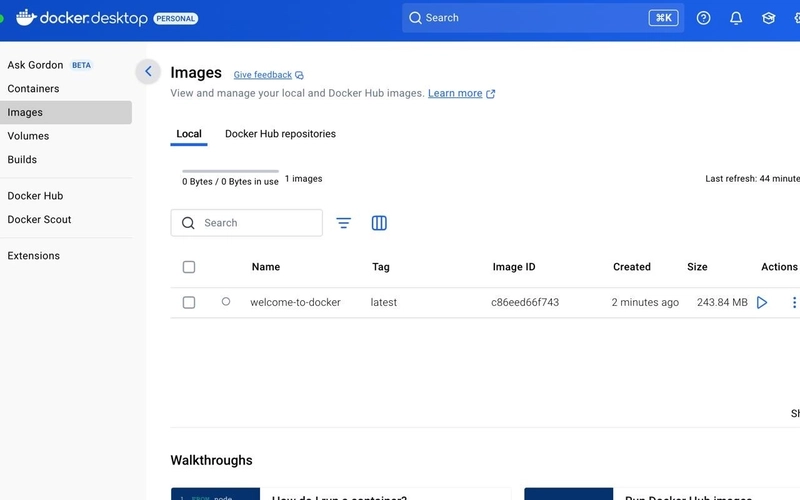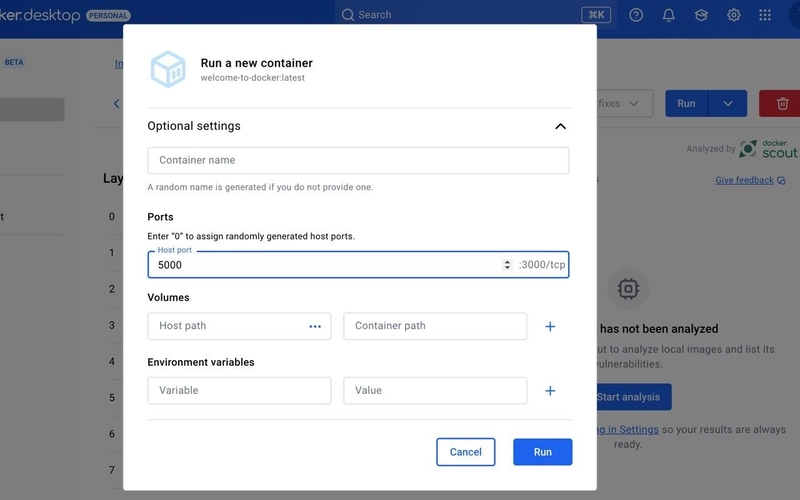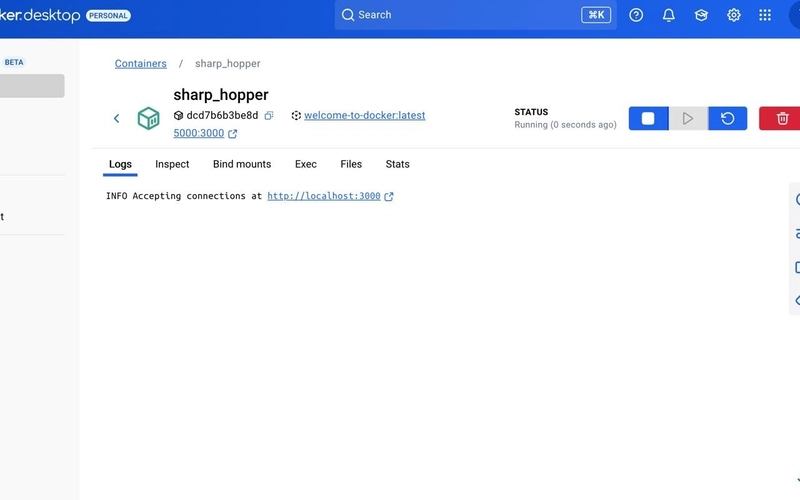As a DevOps engineer, containerizing applications is a crucial part of my workflow. Recently, I worked on dockerizing a simple Node.js front-end project, and I’d love to walk you through the process I followed from crafting the Dockerfile to building the image. Here is the command to the repository I cloned for this project, run it on the terminal of your directory/folder.
$ git clone https://github.com/docker/welcome-to-docker
- Project Structure Create a file name “dockerfile” on your folder/directory and here is a quick look at the project layout:
welcome-to-docker/
│
├── dockerfile
├── package.json
├── package-lock.json
├── .dockerignore
├── src/
├── public/
├── README.md
└── ...
The app is a basic React project created with create-react-app, and I aimed to build and serve the static files using a lightweight Docker image.
FROM node:20-alpine
WORKDIR /app
COPY package*.json ./
COPY ./src ./src
COPY ./public ./public
RUN npm install
EXPOSE 3000
CMD ["serve", "-s", "build"]
- Choosing a Base Image To keep the image small and efficient,I used node:20-alpine as the base image:
FROM node:20-alpine
Alpine-based images are minimal and perfect for production environments.
- Setting the Working Directory I then defined /app as the working directory inside the container:
WORKDIR /app
This ensures all subsequent commands execute relative to this directory.
- Copying Project Files I copied the essential files required to install dependencies and build the project:
COPY package*.json ./
COPY ./src ./src
COPY ./public ./public
This step ensures that only necessary files are added to the Docker image, keeping it clean and efficient.
- Installing Dependencies and Building the App This was the key part of the Dockerfile. I configured npm for better reliability and installed the necessary packages before building the project:
RUN npm install
This installs the node modules will be installed into the node_modules directory inside our image.
- Exposing the Application Port
EXPOSE 3000
CMD ["serve", "-s", "build"]
This sets the default command that runs on port 3000 when the container starts.
- Building the Docker Image Once the Dockerfile was ready, I ran the following command to build the image:
docker build -t my-react-app .
This created a Docker image tagged my-react-app.
- Running the Container to serve the application, I used:
docker run -p 3000:80. “Image name” serve -s build
This spins up a container maps port 3000 on your host to port 3000 in the container.
Using Docker Desktop to manually run your container after build
Step 1: Launch Docker Desktop.
Step 2: Navigate to the “Images” tab on the left panel.

Step 3: Run the Image
• Find your image (e.g., my-react-app) in the list.
• Click the “Run” button next to it.
• In the popup:
• Set a container name (optional).
• Set the port mapping — e.g., host port 5000 to container port

Step 4: Access the App
• Go to your browser and open http://localhost:5000 to view your app.
Dockerizing applications simplifies deployment, ensures consistency across environments, and makes scaling easier. By carefully crafting a Dockerfile, I containerized my React app in a clean, efficient way ready for production or further development.







Top comments (0)